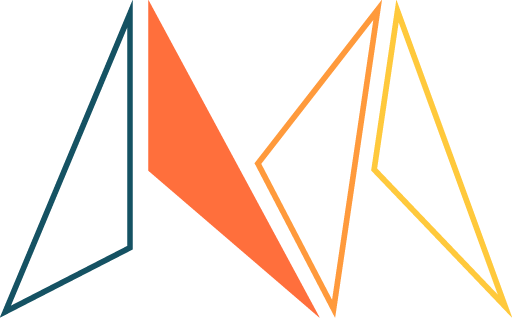Summary
This teaching activity aims to help students understand the interdependence between humans and more-than-humans. Students will work with a situation where humans and more-than-humans are interdependent to better understand how humans might play a role in nature-cultural systems. Based on the chosen situation, students create illustrated stories about these interpendencies. The stories can be manifested through storyboards or children’s books like stories with illustrations. The teaching activity begins with an introduction that provides examples of interdependencies inspired by Bellacasa’s (2017) food web model and ‘the three sisters’. The teaching activity can be used to further elaborate on the more-than-human actors defined in the teaching activity ‘More-than-human personas’.
Motivation
To understand the impacts of human actions on eco-systems, natural and urban surroundings, it is crucial to understand the interdependent relationships between human and more-than-human actors. Interdependencies can involve many factors. For instance, in soil, the waste products (a factor) of some more-than-humans will become nutriants for others. These interdependencies might eventually affect humans. For example, degraded soil quality, due to lack of diverse interdependent life forms that enhance soil quality, can make it impossible to grow food. In urban environments, other interdependencies exist. For example, streetlights (a factor) might increase the sense of safety in a park allowing humans to walk there after dark, but they might disturb the circadian rhythm of more-than-humans that rely on the darkness under the trees. By telling the stories from the perspectives of both humans and more-than-humans and exploring their interdependencies, we can gain a holistic understanding of how new designs might influence these relationships.
Learning outcomes
After the teaching activity students should be able to:
- Choose a more-than-human situation to work with based on related knowledge about these situations.
- Find interdependencies between human and more-than-human actors in the chosen situation.
- Describe and illustrate what the interdependencies are about through storytelling tools.
- Discuss what designers should pay attention to if designing with or for the situation studied.
Teacher guidance
Sequence of teaching–learning activities
Preparations:
Adapt the slides and as an option, add slides with other examples. Students should bring sketching paper and different color markers, pens and / or pencils.
Step 1: Lecture, Group size: All, Time: 40 min
The teacher provides a brief introduction to the theoretical concept of food webs, as covered in the readings (see slides). Following this, the teacher presents a selection of ecosystems where human and more-than-human actors are interconnected and interdependent.
Step 2: Group work, Group size: 4-6, Time: 35 min
Students work in groups to select one of the situations described by the teacher. They then investigate how the different actors in the ecosystems are related and interdependent.
The teacher monitors the students’ progress, providing guidance on aspects to consider.
Step 3: Group work, Group size: 4-6, Time: 45 min
Students use storytelling tools like storyboards or a children’s book format, to tell and illustrate in simple language how more-than-human and human actors are interdependent.
Step 4: Share in class, Group size: All, Time: 60 min
Student groups present their stories to the class. During the presentations, the teacher facilitates a discussion, encouraging reflections on the illustrated stories and considering what designers need to consider when designing for or with these situations.
Questions for assessment
- Why did you choose this situation?
- What interdependencies are crucial for the different stakeholders’ existence and well-being?
- What are your considerations on how a design might address the situation that you have worked with?
- Are there some matters of concern in the situations that you worked with that designers need to pay special attention to?
Recommended readings
Puig de la Bellacasa, Maria (2017), Matters of care: speculative ethics in more than human worlds, Posthumanities. University of Minnesota Press.
Category

Assemblage
Duration
3 hours
Materials
Credits
This method is inspired by Maria Puig de la Bellacasa’s (2017) care ethics where she describes how more-than-humans and humans are interdependent on each other. She illustrates those interdependencies and the need to consider them holistically through a food web model.
Puig de la Bellacasa, Maria (2017), Matters of care: speculative ethics in more than human worlds, Posthumanities. University of Minnesota Press.
